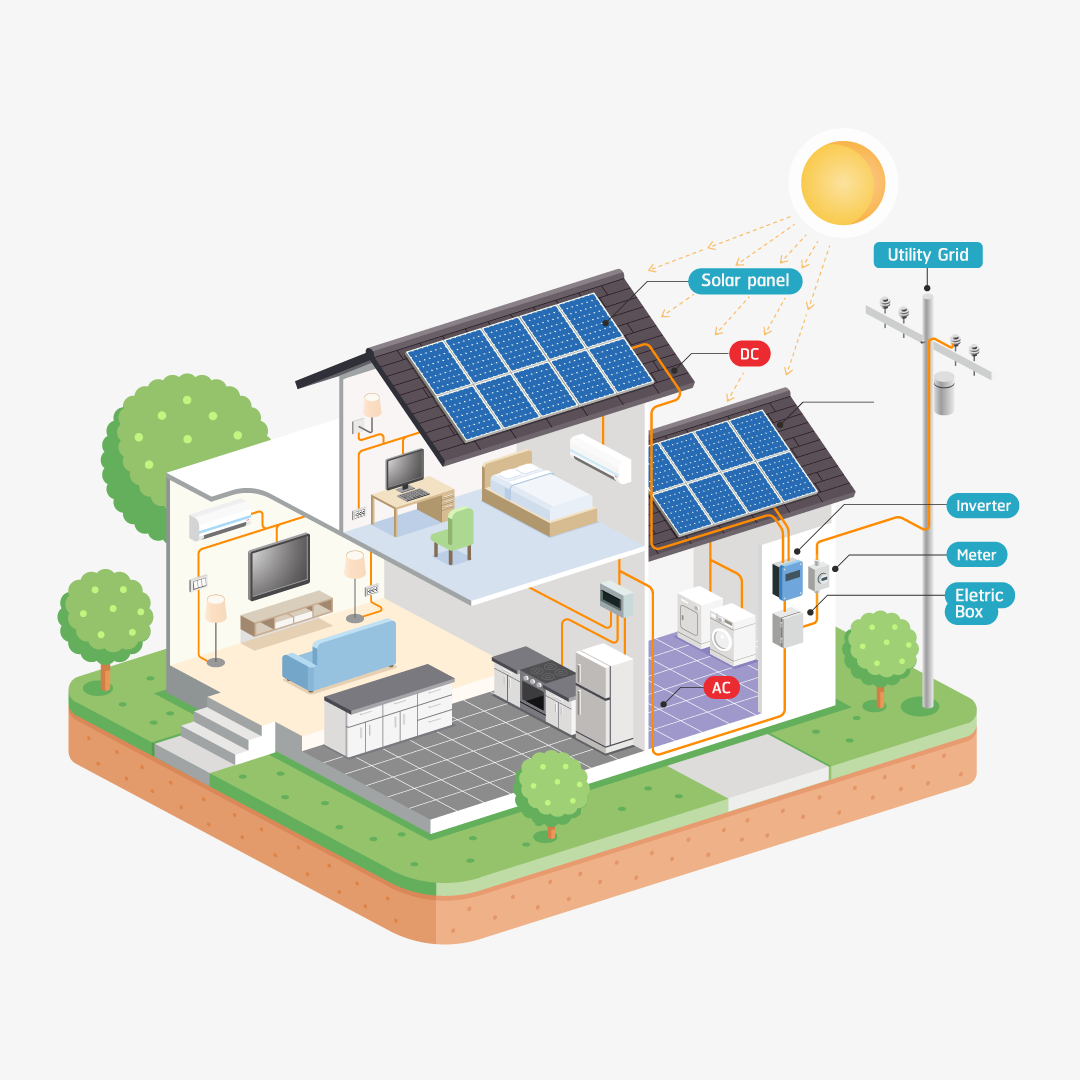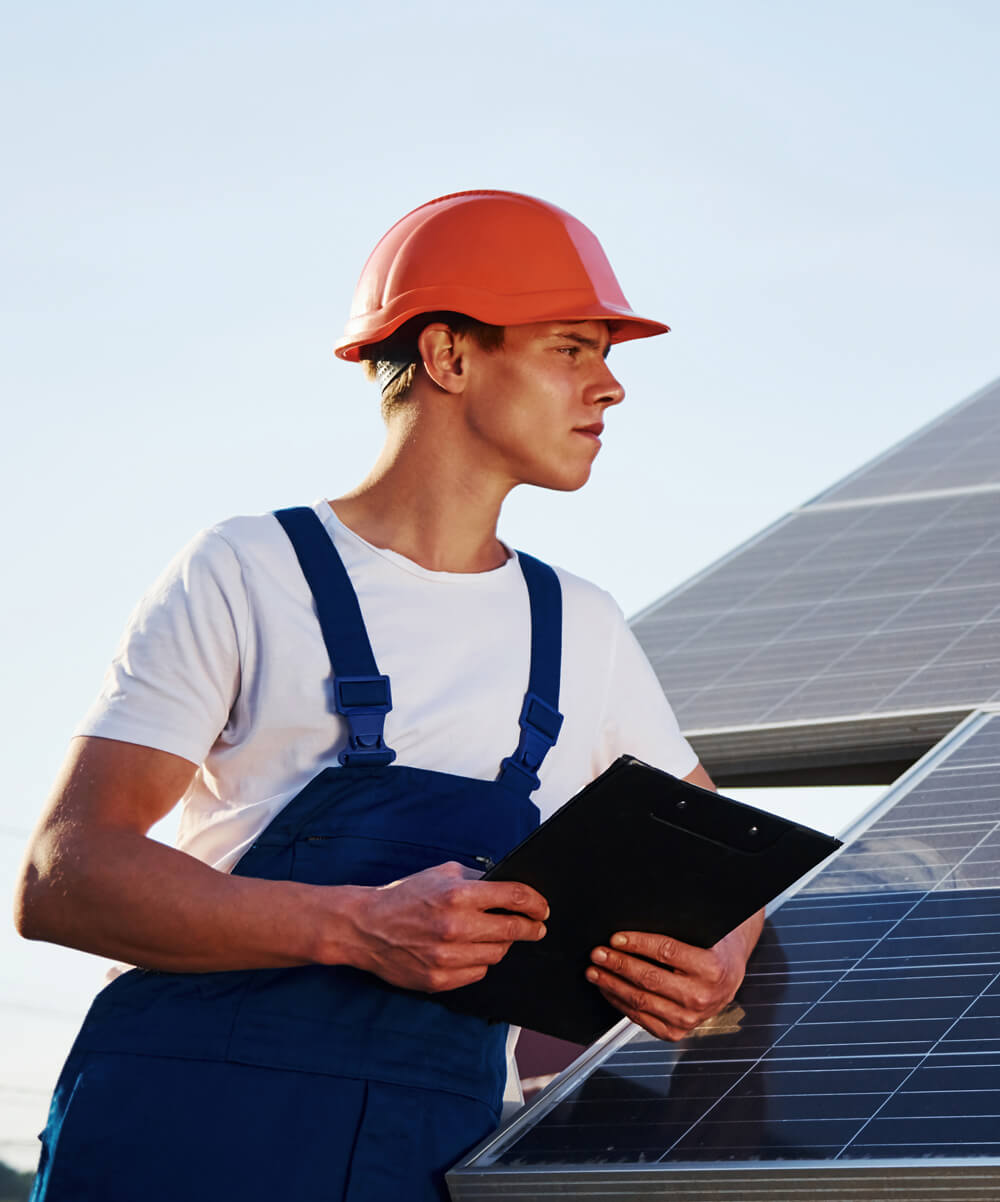Understanding Solar
Are you looking to understand how Solar Power works and how it can benefit you? Embracing Solar Power means having control of your energy usage, significant monthly savings and the benefit of moving away from fossil fuels for energy. The diagram outlines the different components of a typical solar system.

Solar Panels
Your solar panels capture the sun’s rays and convert them into energy.
Inverters
Microinverters convert the DC energy to AC energy to be used by the home.
Electric Box
The energy created goes directly to the main electric panel to be distributed into the home for immediate use.
Meter
The utility meter tracks both production of electricity and consumption by the home.
Utility Grid
All excess energy created is delivered to the utility grid. This allows your home to be powered at night after the sun goes down.
How Do I Monitor My System?
Simply access our usage monitoring software (better known as MyAbacus) on your computer, smartphone, or tablet after your system has been setup. You have visibility into all aspects of your system’s performance and track trends over time here. MyAbacus makes it very easy to maximize your system & savings. Additionally, you’ll be contacted right away if there appears to be a problem.
What if the system fails?
Our installations are built to resist the elements and stress that your roof will face throughout its life. But, in the event that something goes wrong, we’ve got you covered. A 25-year manufacturer’s guarantee is included with most major components, as well as our typical Abacus Energy 10-year workmanship warranty.
What happens to my Energy Bill?
Your power bill becomes a lot more enjoyable to read when you go solar. You’ll notice your household power usage as well as how much energy your solar system saved you on your new statement. Your utility company’s metering program will display your net usage and cost.


